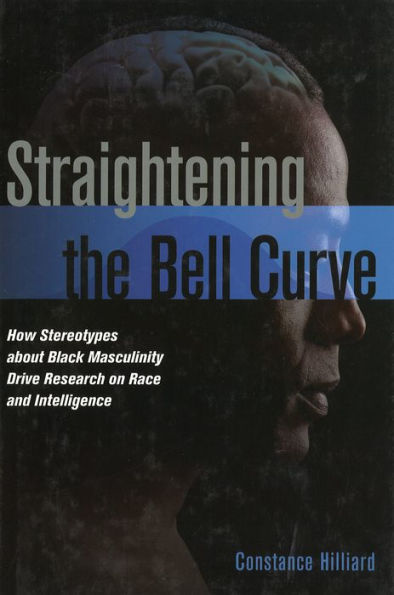"Straightening the Bell Curve is far more than a critique of pseudoscientific claims regarding intelligence and race. It is an intriguing examination of the centuries-old obsession with ‘racial’ intelligence by a small subset of the scientific community. Hilliard deftly turns the lens from the claims themselves, which have been thoroughly discredited by the vast majority of the scientific community who debunk ‘race’ as a major human variable, and instead analyzes the mindset of those who still embrace such claims in the face of overwhelming evidence to the contrary. In doing so, she provides a fascinating account of why race still matters to men considered some of the best minds of the contemporary age and how such theories are employed in the service of specific social and political agendas."—Dr. Quintard Taylor, professor of American history, University of Washington; author of In Search of the Racial Frontier: African Americans in the American West, 1528–1990
"A remarkably engaging book. It is also a ‘must-read’ for scholars in the fields of race relations, IQ research, as well as public and higher education for minorities. Professor Hilliard exposes the shamefully raw underbelly of research purporting to show racial differences in intelligence, uncovering the myths and misconceptions and the personal biases of some authors. This is a seminal work that will undoubtedly alter the way mainstream scholars and the public at large view such pseudoscientific research and the people who engage in it. I strongly recommend it."—Dr. Joyce Ladner, African American sociologist; author of Launching Our Black Children for Success
"A book that is difficult to set aside once opened, with its clear, crisp, and highly readable writing style. Hilliard’s strength is her ability to reach into the published writings of various experts on race, gender, and IQ research, and discover their private worlds."—Dr. John Haller, Emeritus Professor of History and Medical Humanities, Southern Illinois University; author of Outcasts from Evolution
"A remarkably engaging book. It is also a ‘must-read’ for scholars in the fields of race relations, IQ research, as well as public and higher education for minorities. Professor Hilliard exposes the shamefully raw underbelly of research purporting to show racial differences in intelligence, uncovering the myths and misconceptions and the personal biases of some authors. This is a seminal work that will undoubtedly alter the way mainstream scholars and the public at large view such pseudoscientific research and the people who engage in it. I strongly recommend it."—Dr. Joyce Ladner, African American sociologist; author of Launching Our Black Children for Success
"A book that is difficult to set aside once opened, with its clear, crisp, and highly readable writing style. Hilliard’s strength is her ability to reach into the published writings of various experts on race, gender, and IQ research, and discover their private worlds."—Dr. John Haller, Emeritus Professor of History and Medical Humanities, Southern Illinois University; author of Outcasts from Evolution
"In Straightening the Bell Curve, Constance Hilliard goes where no one dared go before. She asks fundamental questions: Why did race and IQ researchers focus on African American male sexual physiology? Why did they draw false correlations between their distorted perceptions of the former with their own limited vision of intelligence? She provides us with important answers that illuminate the struggle between method and motivation. This is a book I wish I had written myself."—Dr. Joseph Graves, professor of biological science and Associate Dean for Research at the Joint School of Nanoscience & Nanoengineering, Greensboro, North Carolina; author of The Race Myth
"Straightening the Bell Curve is far more than a critique of pseudoscientific claims regarding intelligence and race. It is an intriguing examination of the centuries-old obsession with ‘racial’ intelligence by a small subset of the scientific community. Hilliard deftly turns the lens from the claims themselves, which have been thoroughly discredited by the vast majority of the scientific community who debunk ‘race’ as a major human variable, and instead analyzes the mindset of those who still embrace such claims in the face of overwhelming evidence to the contrary. In doing so, she provides a fascinating account of why race still matters to men considered some of the best minds of the contemporary age and how such theories are employed in the service of specific social and political agendas."—Dr. Quintard Taylor, professor of American history, University of Washington; author of In Search of the Racial Frontier: African Americans in the American West, 1528–1990
"[A] short but important book..."—Choice, December 2012



